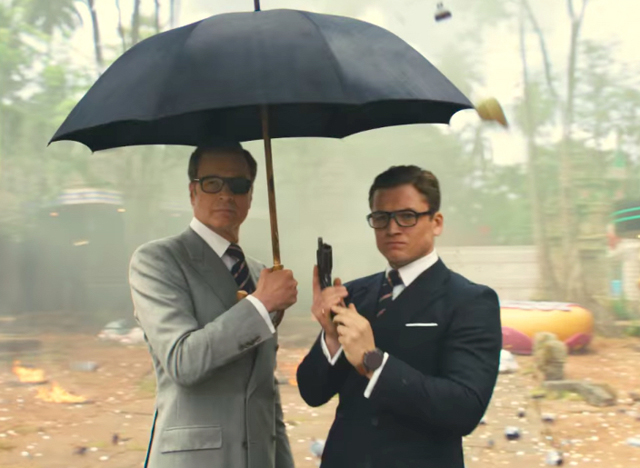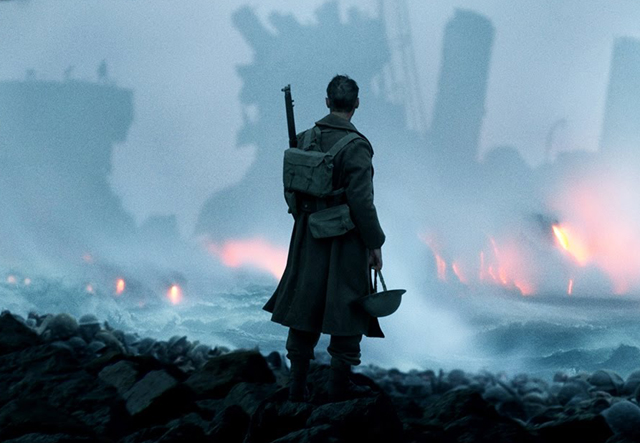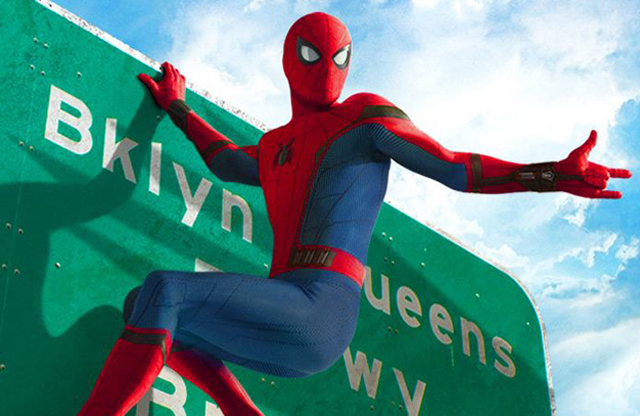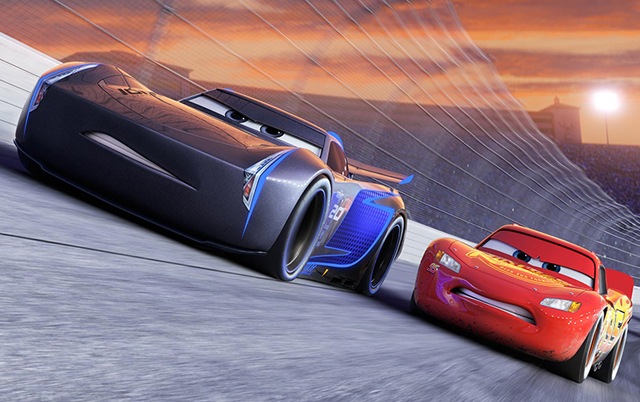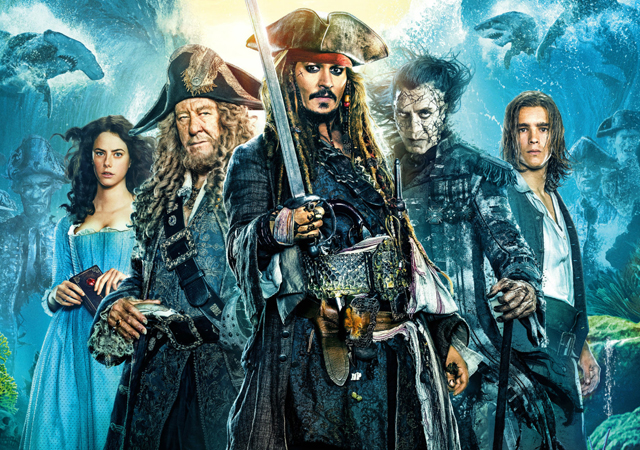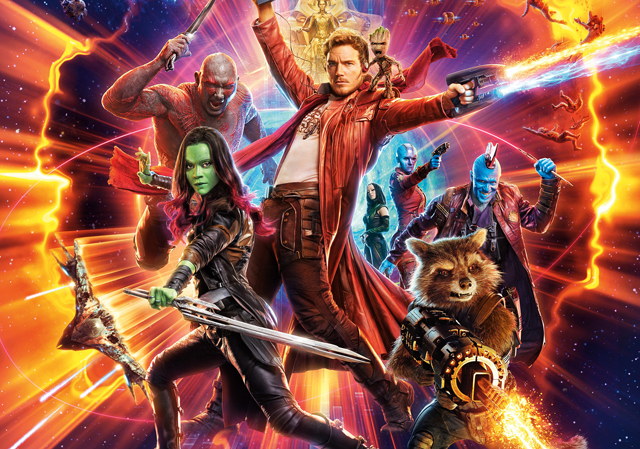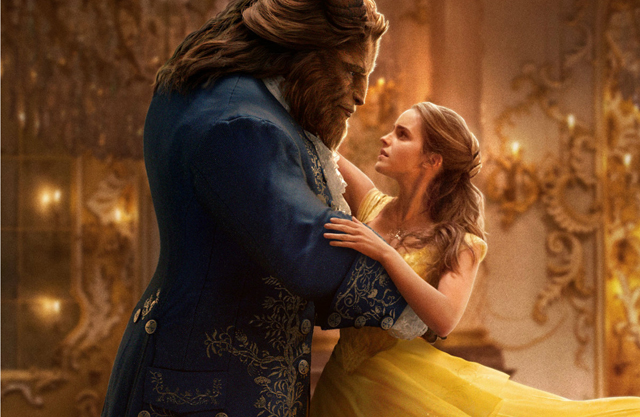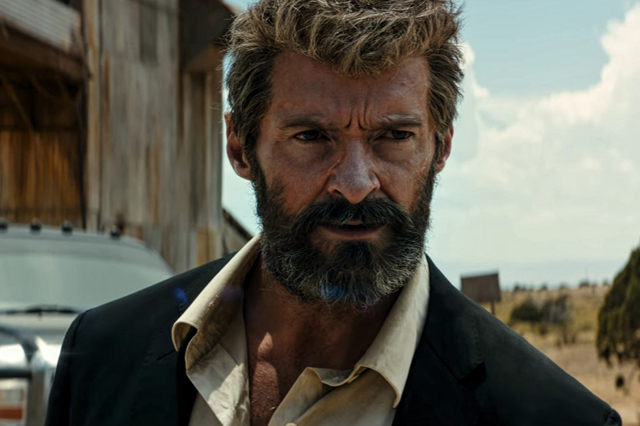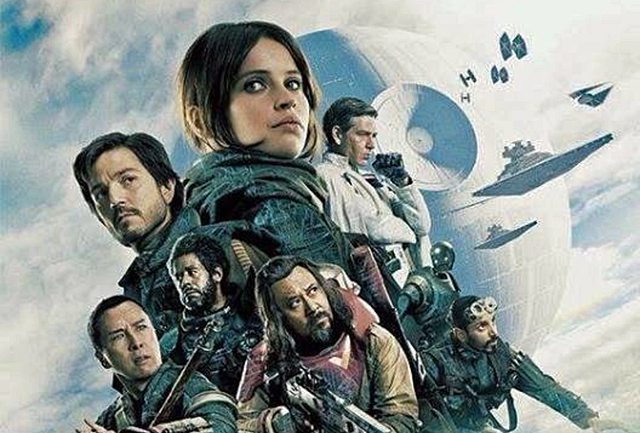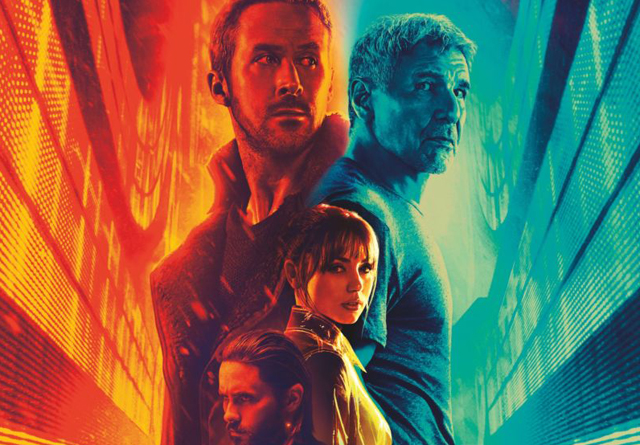
Some movies are instant classics, while others become classics over time; aging like fine wine. When Ridley Scott’s Blade Runner came to theaters 35 years ago, it did not perform well at the box office. Released in a rather remarkable summer season that also included the likes of John Carpenter’s The Thing, Disney’s Tron, Star Trek’s The Wrath of Khan, and Spielberg’s E.T. The Extra-Terrestrial, Blade Runner was viewed as too slow-paced and ponderous by critics and audiences at the time. For a time, it seemed like the movie would remain a relic of it’s time and then something remarkable happened. It found it’s audience, and turned not just into a cult hit, but became one of the most defining cinematic milestones of late 20th century. You can see the influence of Blade Runner in everything from anime like Ghost in the Shell (1995), to The Matrix (1999), to even the visual pop of Guardians of the Galaxy (2014) with all it’s flashy neon color. The future that we also live in has somewhat seen an influence from the movie, including how some of it’s imagined future tech like video based communication, synthetic food and artificial intelligence have become a reality in our present day. Truth be told, the then far off future date of 2019 looks far different than the reality that we see only 2 years out, but there is quite a lot that the movie did predict right. Also of note is the philosophical legacy that the movie has left behind. Taking it’s cue from the original story “Do Androids Dream of Electric Sheep” from futurist Philip K. Dick, Blade Runner asked many questions that still are debated today; much of which centers around the basic idea of what it means to be human. Several decades after it’s release, Blade Runner continues to be an influential film and it’s esteem only continues to grow; with more and more people claiming it as one of the best every made. And now, 35 years later, Hollywood has done something thought unthinkable before; they made a sequel to Blade Runner.
Blade Runner 2049 is without a doubt a gamble. One can see rebooting a franchise after a long absence if it’s got the kind of following that could justify it. Sometimes it works out well (Mad Max: Fury Road, Tron: Legacy, Star Wars: The Force Awakens), other times it does not (2016’s Ghostbusters). But, what these successful reboots have in common was their basis in the action genre. Blade Runner is considered by many to be a thinking man’s film. Oh sure, there are action bits in it, but the movie takes it’s cues more from classic film noir, using mood and atmosphere to build the story. The success of Blade Runner comes from it’s perfect execution of those noir tropes, transplanted into a sci-fi plot-line. One of the biggest fears that fans of Blade Runner had going into this movie was the worry that it would be given the Hollywood treatment, meaning that the sequel would take out all the noir elements that made the first film great and replace it with a lot more action. To many of them, the idea of a sequel at all seemed to be an insult, because the first film stood so well on it’s own; anything else would just spoil what was already there. While some of those worries are justified, there was a lot of good omens leading up to the making of this movie. Ridley Scott, who’s recent track record with sequels isn’t all that great (Alien: Covenant for example), wisely stepped aside and just assumed the role of producer this time, giving the reins over to rising star Denis Villeneuve. The French Canadian filmmaker has been on a role recently with Prisoners (2013), Sicario (2015), and Arrival (2016) all winning critical acclaim, and he couldn’t be better suited to carry the mantle for this daunting project. Couple that with Harrison Ford making another return to an iconic role, surrounded with a prestige cast and crew, and you’ve got the makings of an A-List production. But, is it a film worthy to carry on the legacy of such an iconic film, or is it Hollywood once again milking a product and missing the point.
It’s hard to say much about the plot of Blade Runner 2049 without getting into spoilers, so I’ll try to keep the important stuff vague. It is important to have some knowledge of the original movie in order to understand the intricacies of the plot, but at the same time it does a pretty decent job of laying that stuff out for you while at the same time feeling distinctly it’s own thing. The movie is set in the year 2049, 30 years after the events of the first Blade Runner. In that time, the earth’s climate has catastrophically changed, leading to a global shift in weather patterns. Los Angeles, the setting for this story, is now cold and frigid, and sees frequent snowfalls. Every part of the city is shrouded in a misty haze, and it is in this urban sprawl that we find a young “blade runner” named simply K (Ryan Gosling). He is assigned by his superior, Lieutenant Joshi (Robin Wright) to track down a rogue replicant named Sapper Morton (Dave Bautista). The replicants (human-like androids with superior strength) have been used for the last several decades to colonize distant planets beyond Earth, but older generations were known to be rebellious against their masters. The Tyrell Corporation that built them has long been defunct, with a new corporation run by enigmatic founder Niander Wallace (Jared Leto) built upon it’s foundations with a line of even more obedient replicants. K finds Sapper’s compound and promptly “retires” him as all blade runners are ordered to do. However, upon investigating the compound, K finds a tree with a mysterious box buried within it’s roots, along with a mysterious date carved into the tree; 6-10-21. This finding leads him down a road towards learning about the old Tyrell replicants who held a lot more secrets than what was thought before, and K must now search for the man with the answers he needs; former blade runner Rick Deckard (Harrison Ford).
Blade Runner 2049 could have gone awry in so many different ways, as many sequels to great movies do, and I’m happy to say that this one thankfully accomplishes what it needed to do. This is a very well crafted and masterful sequel that will please any Blade Runner fan out there. In many ways, I was stunned just how well they pulled it off. Watching this movie almost immediately after viewing the original makes this new film feel like the second part of a larger whole, which is exactly what it needed to do. It expands and deepens the world of the first Blade Runner, while at the same time feeling fully complimentary to it as well. The filmmakers did a fantastic job matching the aesthetic and thematic elements of the original film. It is not a cheap retread at all, but a fully realized expansion, and it’s every bit a dream come true for those who worship all the bold cinematic choices that the original is known for. In many ways, it probably worked to this film’s advantage that it came so long after the original. It needed for film-making technology to catch up to see the vision fully realized. The original film was groundbreaking itself, with Ridley Scott firmly making a name for himself as a visual artist, but it was also grounded by the limitations of the period. Here, visual effects have advanced to the point where the limits are boundless, but at the same time, the filmmakers here have shown great restraint, choosing not to overload on the effects but instead use them to broaden the scope of what was already there. The movie also needed to wait for a filmmaker of Denis Villaneuve’s ilk to give to take on the project with a degree of seriousness. The movie also benefits having the original screenwriter Hampton Fancher on board, as it’s clear that he’s been refining this story out for decades, making sure that the next chapter in this story was worth the wait.
Now, while I am awed by the degree of success that this production managed to deliver on it’s promises and the remarkable skill put into it’s creation, there is an element to it that does keep it from being an overall great movie in my eyes. And it’s something that more or less is tied to my feelings about the original as well. While I did enjoy this movie quite a bit, it did have one fundamental flaw, and that’s pacing. The original movie has pacing issues as well, but it managed to balance that out a bit more with a tighter edit (although the movie is notorious for having multiple edits, so it depends on which one you prefer). Blade Runner 2049 runs at a staggering 165 minutes, which does make it feel more epic, yes, but also more bloated as well. There are plenty of parts of this movie that do flow very well, and some of the slower paced scenes are welcome, if only for allowing us to soak in some of the incredible atmosphere of this film. There are, however, plenty of moments in this new movie where the pacing drags out to a crawl which left me with a feeling of impatience at times. One scene in particular, involving a wooden horse, is so drawn out that it actually left me rolling my eyes at one moment, almost begging for the movie to finally get one with it. It may not be a big problem to some who are more absorbed into this world, but I just felt that some of these slower paced moments could have used a tighter edit. In the end, it keeps the movie from really soaring in my opinion. And again, it’s something that I felt the original had a fault with as well. Blade Runner, I acknowledge is a great movie, but not among my own personal favorites. It’s a movie that I find myself respecting more than loving, and that likewise is how I feel about 2049.
But there is a lot about the movie that I did love, and it mainly has to do with it’s exceptional production. This is an Audible and Visual experience the likes that you’ll never forget. This is by far the most beautifully shot film of the year, as well as one of the most dynamic sound edits I’ve heard in a long time. The cinematography manages to evoke the look of the original Blade Runner, keeping it within the same visual realm, but elevates it with a far more dynamic color palette and richness to the textures. It helps that the man behind the lens is none other than Roger Deakins, who is probably the greatest working cinematographer today and one of the best of all time. Most famous as a collaborator with Coen Brothers, Deakins has already worked well alongside Denis Villenueve before on equally brilliant work in Sicario. Here, working with a more substantial budget, Deakins and Villenueve create some of the year’s most staggering imagery on screen, filling every frame with eye-catching wonder. I just love the way that Deakins captures the hidden shadows of colossal structures appearing out of the hazy smog like great symmetrical monoliths holding up the sky. He also makes his compositions feel in character with the original, helping to honor it’s legacy while at the same time pushing out it’s boundaries. One scene in particular in a Vegas nightclub is a tour de force in visuals that represents just how much creativity Deakins and Villeneuve can find in this world they’ve become the caretakers of. The musical score is also a bold statement onto itself. Composed by Hans Zimmer and Benjamin Wallfisch, the music takes it’s inspiration from the original Vangelis melodies and takes it a whole other aural experience. This movie has a musical score that will quite literally rattle your bones. It’s pulsating and overwhelming, but at the same time perfect for this movie. I could even swear that one of the themes felt inspired by the sound of a revved up Formula 1 engine. I don’t know why it sounded like that, but it’s indeed unforgettable and worthy addition to the whole experience. It overall makes this a remarkable cinematic experience, even if the plot itself suffers from slow pacing.
The movie also has a stellar cast, who for the most part do a fine job. It’s neat to see Harrison Ford once again step into another one of his iconic roles so many years later and not miss a beat. Only a short time after revisiting Han Solo, we find him returning to Rick Deckard with the same amount of passion and care put into the performance. Deckard is a much trickier character to pull of, given the complexities that he’s got to encapsulate, but Ford does an incredible job not just returning to what he’s done before, but also finding new shades to his persona that give so many more layers to the character. He doesn’t show up until very late into the movie, but it works to the benefit of the film because it makes his appearance all the more important when it happens; and plus, it’s not really Deckard’s story this time. Ryan Gosling instead carries much of the weight of this film, and he does so quite admirably. Some might find him a little dry, but I liked the restraint in his performance, which feels spiritually in line with what Harrison Ford brought to his role in the original film. Much of the supporting cast does a great job as well. My own particular favorite among the newcomers was actress Sylvia Hoeks as one of the Wallace Corporation’s more deadly replicant models, going by the ironic name of Luv. There is also a nice tender performance from actress Ana de Armas who plays K’s artificial intelligence “girlfriend” Joi, who appears to him as a hologram. It’s a tricky kind of role, but one that she brings a surprising amount of emotion into. The only weak link in the cast would be Jared Leto’s Wallace, who while not terrible, is also not really fleshed out that well. It’s a problem when he needs to act as your film’s antagonist, and I’m sorry he does not hold nearly half the menace nor the presence of Rutger Hauer’s Roy Batty from the original Blade Runner. Apart from this, it is a well rounded cast that helps to elevate the movie as a whole.
So, much like the original Blade Runner, 2049 is a movie that I can recognize as a great cinematic achievement, while at the same time feel a tiny bit underwhelmed. Don’t get me wrong, it deserve every amount of praise that is going to come it’s way, and fans of the original are absolutely going to be satisfied by this one as well. In that respect, this movie is an unequivocal triumph, because it took the daunting task of following up a widely regarded masterpiece with a bigger and louder sequel, and did so with in the best possible way. It honors the original, while at the same time building upon it and expanding it into new horizons. I can see why this movie is already being proclaimed as one of the year’s best. The pacing problems were just too hard to forgive for me, and it keeps it from becoming a masterpiece in my eyes. I have the same reservations about the original as well, but feel that it holds up better because there were so much else about it that works. I feel that Blade Runner 2049 should have been given another edit to tighten things up and remove some of the more bloated, unnecessarily drawn out moments. Hell, more edits didn’t hurt the original in the long run, as Ridley Scott was better able to refine his masterpiece and find the version that both satisfied him artistically and appealed to audiences. But, as it stands, the movie is still one of this year’s most impressive cinematic achievements, and one that will be deserving of it’s expected fan-base. Few sequels, especially ones made so long after the original, ever come close to retaining the same level of quality as their predecessor, so the fact that this one was able to come so close is a bit of a Hollywood miracle in this day and age. Keep in mind, I was born mere weeks after Blade Runner premiered originally in 1982, so this was a sequel that took my entire lifetime to become a reality and the fact that it turned out this good is a testament to the astounding hard work and seriousness that the filmmakers undertook in it’s making.
Rating: 8/10
